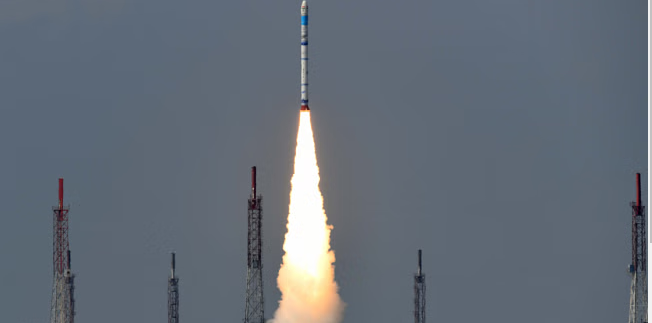Kolkata, August 2024 – In a major achievement, the Indian Space Research Organisation (ISRO) has successfully launched the EOS-08 Earth Observation Satellite. The launch, which took place on August 16, 2024, from the Satish Dhawan Space Centre in Sriharikota, also marked the completion of the Small Satellite Launch Vehicle (SSLV)-D3’s development phase.
The Launch in Simple Terms
Early in the morning, the SSLV-D3 rocket took off carrying the EOS-08 satellite. This satellite is designed to keep an eye on the Earth’s environment, helping with things like disaster management and monitoring changes in nature. Alongside the EOS-08, the rocket also carried a tiny satellite made by Space Kidz India, which was successfully placed in orbit soon after the main payload.
Why This Matters
The SSLV is a new kind of rocket that ISRO has developed. It’s smaller and cheaper compared to the older rockets, like the PSLV. This makes it ideal for launching smaller satellites, which are in high demand these days. Plus, the SSLV can be prepped for launch quickly, which is great for last-minute missions.
The EOS-08 satellite, which was the star of this mission, is equipped with advanced technology to monitor various environmental factors. This means it can help track natural disasters like floods and wildfires, providing crucial data to help manage these situations more effectively.
What’s Next?
With this successful launch, the SSLV is now ready for commercial missions. ISRO’s commercial arm, NewSpace India Ltd (NSIL), is already planning the first dedicated commercial SSLV launch for 2026, where they’ll be deploying a satellite from Australia. This launch marks a big step forward, positioning India as a key player in the global space market.
ISRO’s achievement with the EOS-08 and SSLV-D3 launch is not just a win for India but also a significant milestone in space exploration, making space more accessible and affordable for many.

